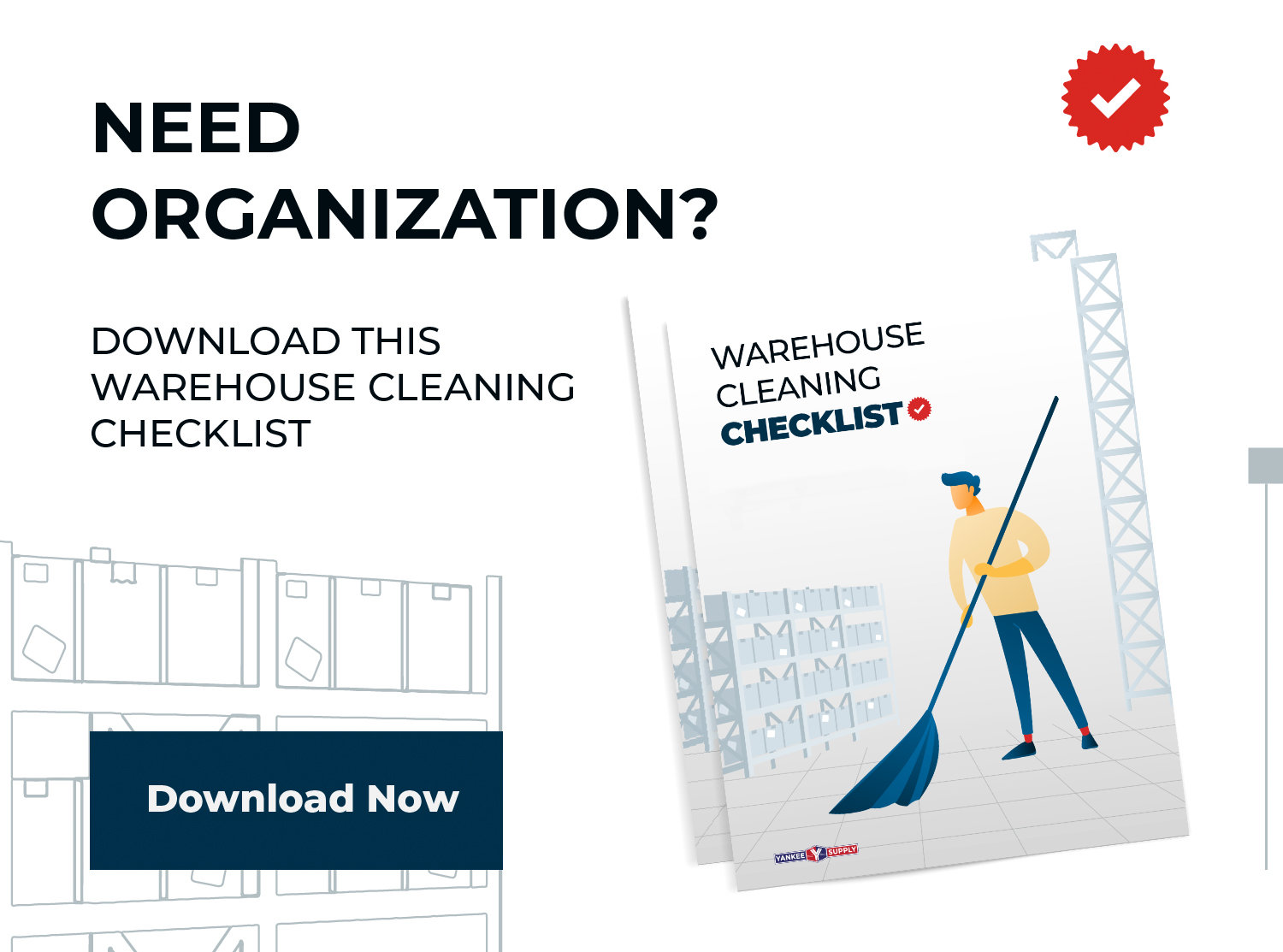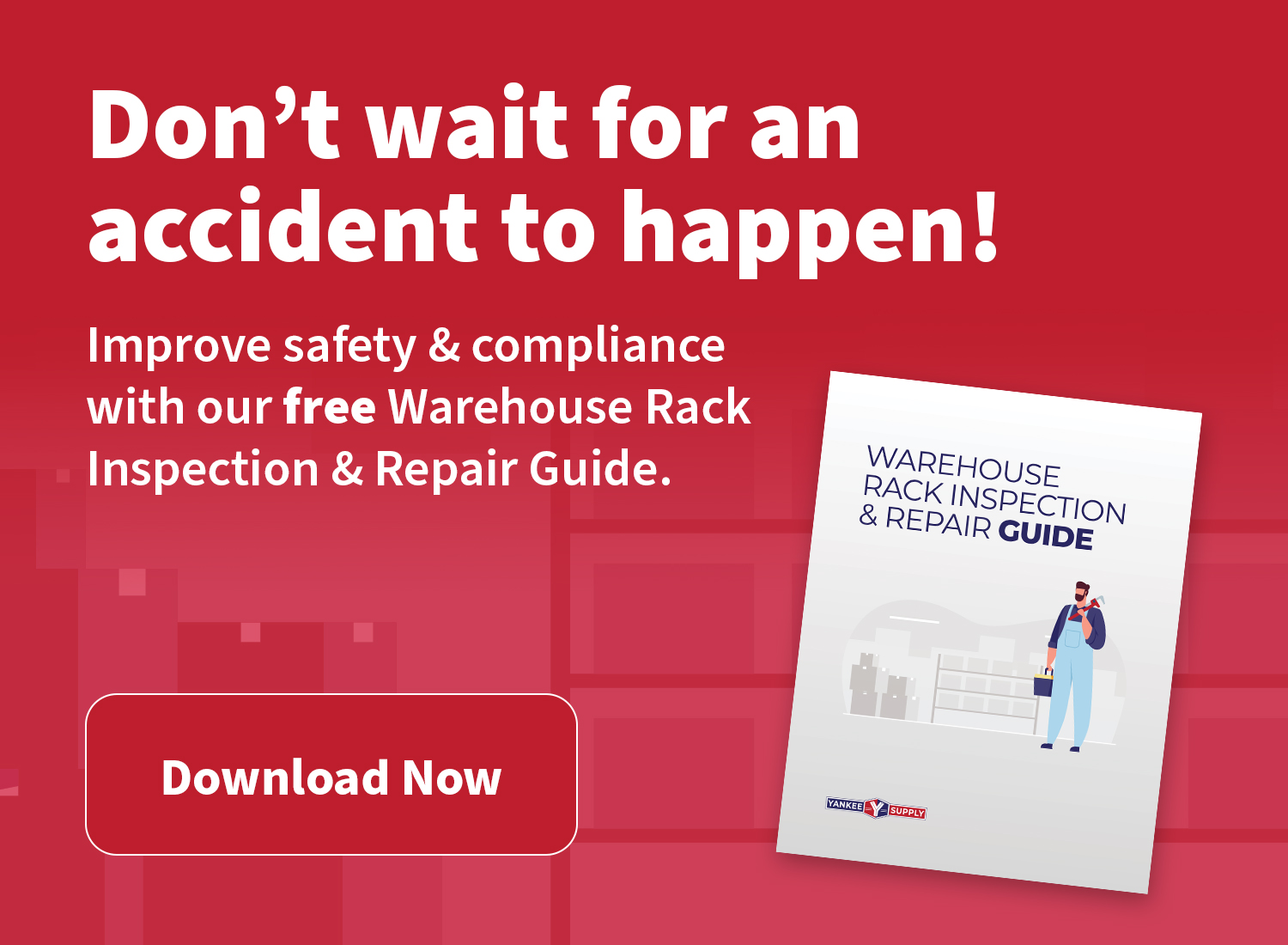This blog post will detail several warehouse problems that can be avoided by regular maintenance and cleaning. You can avoid these problems by using regular cleaning and organization approaches. As a result, having a well-organized warehouse cleaning checklist will help you reduce the headache caused by warehouse problems.
Common Warehouse Issues and How Regular Cleaning Can Prevent Them
A well-organized warehouse still needs help with productivity, safety, and customer satisfaction issues. We will look at some of the most common problems and ways to avoid them with regular cleaning.
1. Productivity and Efficiency
An untidy and cluttered warehouse storage can decrease the productivity of a business. It could become difficult for workers to access the needed products, causing delays in finishing jobs and delivering orders. Unorganized storage makes it challenging for employees to locate and retrieve objects, which may result in wasting time and energy looking for missing items. This may also cause chaos and mistakes that lead to lost inventory, resource wastage, customer dissatisfaction, and an overall loss in revenue.
Regular cleaning and organizing storage areas can boost efficiency by ensuring supplies are conveniently accessible, appropriately labeled, and easy to locate. Proper labeling and organizing can help your workers quickly find the necessary items. In addition, regular cleaning can help to spot any damaged or expired items that can be taken out of storage, saving space and lowering the chances of confusion and mistakes. Using racks, shelves, and appropriately sized bins to make them easily accessible can also make for a more efficient storage system.
2. Safety and Accidents
Workplace accidents and injuries can result from workers stumbling over debris and barriers in walkways. Not only may this hurt the workers, but it could also result in expensive workman’s compensation claims and legal actions. In addition, accidents may result in lost production and operational downtime.
Regular warehouse cleaning and maintenance can help to avoid these hazards by keeping walkways clear and free of waste, lowering the likelihood of accidents and injuries. In addition, safety standards can be achieved by routinely sweeping and washing the floor, clearing away any debris or impediments, and organizing the warehouse’s inventory so that there is enough room for employees to move around safely. Keeping the warehouse in good condition helps to ensure everyone’s safety by lowering the chance of mishaps and injuries.
3. Inventory and Stock Management
Poor organizing and labeling can make it hard for employees to find and retrieve products in a warehouse, wasting time and effort looking for lost items. A poor organization might also confuse workers and make mistakes, wasting resources and leading to dissatisfied clients and lost goods. Furthermore, improper labeling and arrangement might be challenging for you, as a warehouse manager, to keep track of inventory levels and forecast future stock requirements.
Proper labeling and organizing are important to avoid problems with finding supplies and make it simpler for your employees to obtain the necessary materials. This includes assigning identifying numbers or codes, clearly labeling them, and storing products in the proper racks, shelves, and bins. Organized inventory can also aid warehouse managers in efficiently using space, easily identifying discrepancies or concerns with inventory, and enabling prompt action.
4. Equipment and Machinery Maintenance
The accumulation of dust and debris in a warehouse can seriously harm machinery and equipment by producing friction and wear on moving components, trapping heat and causing equipment to overheat and deteriorate, clogging filters and cooling systems, causing a fire risk, and damaging ventilation systems. It may also impact the reliability and quality of the goods kept in the warehouse.
Regular cleaning is essential to extending the lifespan of machinery and equipment in a warehouse. In addition, reduced accumulation of dust and debris may minimize wear and friction on moving parts. Removing any dust and debris that may have accumulated in cooling systems, filters, and other vital components also prevents overheating and other difficulties caused by buildup. It could also maintain the proper operation of fire prevention systems, resulting in longer equipment and machinery lifespans. It also reduces the need for expensive repairs and equipment replacements, saving you from spending extra funds.
5. Fire Hazards
The accumulation of flammable goods in a warehouse can considerably raise the danger of fire hazards. They can ignite and produce serious flames if they come into touch with heat or sparks. Furthermore, flammable substances like paper, cardboard, and wood can cause fires if not stored appropriately. The accumulation of flammable materials can also hinder the effectiveness of fire protection systems, including fire alarms and sprinklers, making it more difficult to detect and put out fires. Additionally, blocked or cluttered aisles and storage spaces can make it more difficult for staff members to escape a fire quickly.
The warehouse has to be regularly cleaned and maintained to lessen the risk of fire hazards. Flammable materials also need to be stored safely. Ensure that flammable products are stored in appropriate containers and spaces and separated from other materials. In addition, fire extinguishers and sprinkler systems must also be regularly inspected and maintained.
Frequent cleaning and maintenance can reduce the likelihood of fire dangers and safeguard personnel, equipment, and the warehouse from fire damage. It is crucial to be aware of the hazards, put safety measures in place, and prepare staff for emergencies.
6. Air Quality and Health
The build-up of dust and debris in a warehouse can dramatically impair air quality. Accumulating particles, such as mold spores, pollen, and chemicals, increases the risk of respiratory issues among workers, which can also irritate the eyes, nose, throat, and lungs. It could also cause various respiratory diseases, such as asthma, bronchitis, and lung cancer. In addition, when dust and debris accumulate in a warehouse, it becomes difficult to monitor the air quality. It can also hamper the correct operation of ventilation systems, making it more difficult to maintain the warehouse’s proper temperature and humidity levels. As a result, workers and the products kept in the warehouse are impacted by poor air quality, which can lead to quality issues.
The warehouse must be kept clean, and constantly maintaining ventilation systems could reduce the threat of respiratory problems. This includes routine maintenance on the cooling systems, filters, and machinery and regular inspections to spot problems before they worsen air quality. Additionally, it’s critical to frequently check and maintain ventilation systems, including air filters and ducts, to ensure they are operating correctly and can maintain the warehouse’s air quality.
7. Pest infestations and contamination of products
Warehouse pest problems could cause serious issues for businesses. Ants and other insects can contaminate products and cause health risks, while rodents and cockroaches can harm products, packaging, and wiring. Infestations of pests can increase cleaning and maintenance costs while harming a company’s reputation. They may also endanger the health of employees and clients by spreading illnesses and allergies, aggravating skin conditions, and allergic reactions.
Maintaining a clean, well-maintained warehouse is crucial to avoid pest infestation. This includes routine maintenance and cleaning of the warehouse and regular inspections to spot any possible problems and take appropriate action before they result in a pest infestation. In addition, it is crucial to follow effective sanitation and storage practices, as well as reduce trash and debris buildup. This entails routinely disinfecting and cleaning storage spaces and properly disposing of garbage.
This highlights that regular cleaning and maintenance retain the value of equipment, reducing inventory issues and improving worker safety. Prevent 99+ issues and keep your operations running smoothly by prioritizing regular cleaning and maintenance. Create a cleaning program with inspections, proper sanitation, storage procedures, and regular cleaning. If you want to implement a standardized routine cleaning program but don’t know where to start, download our checklist here right away!









